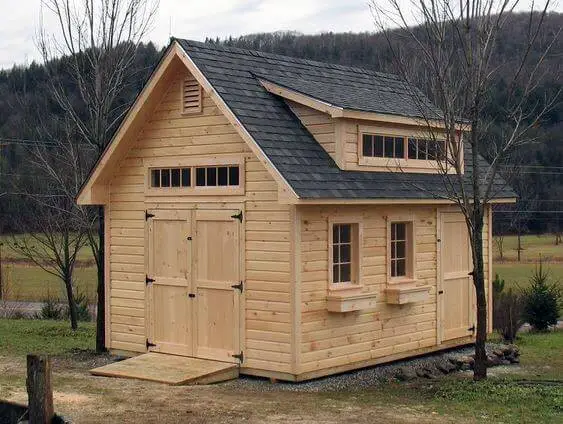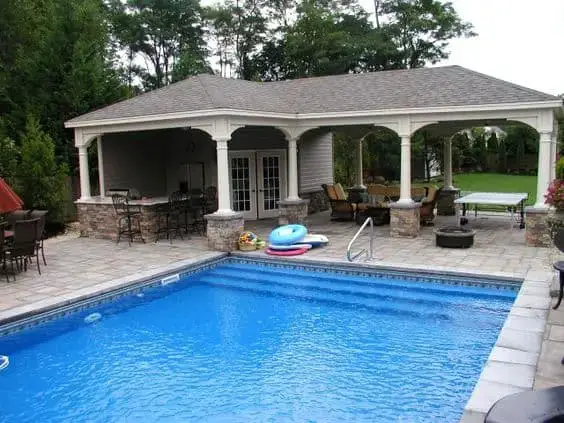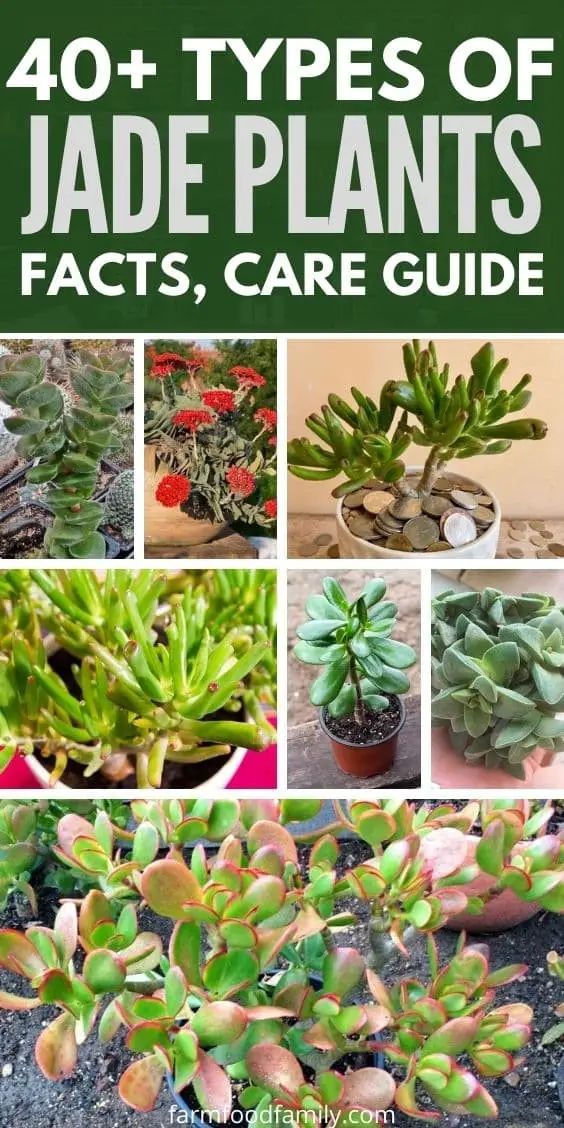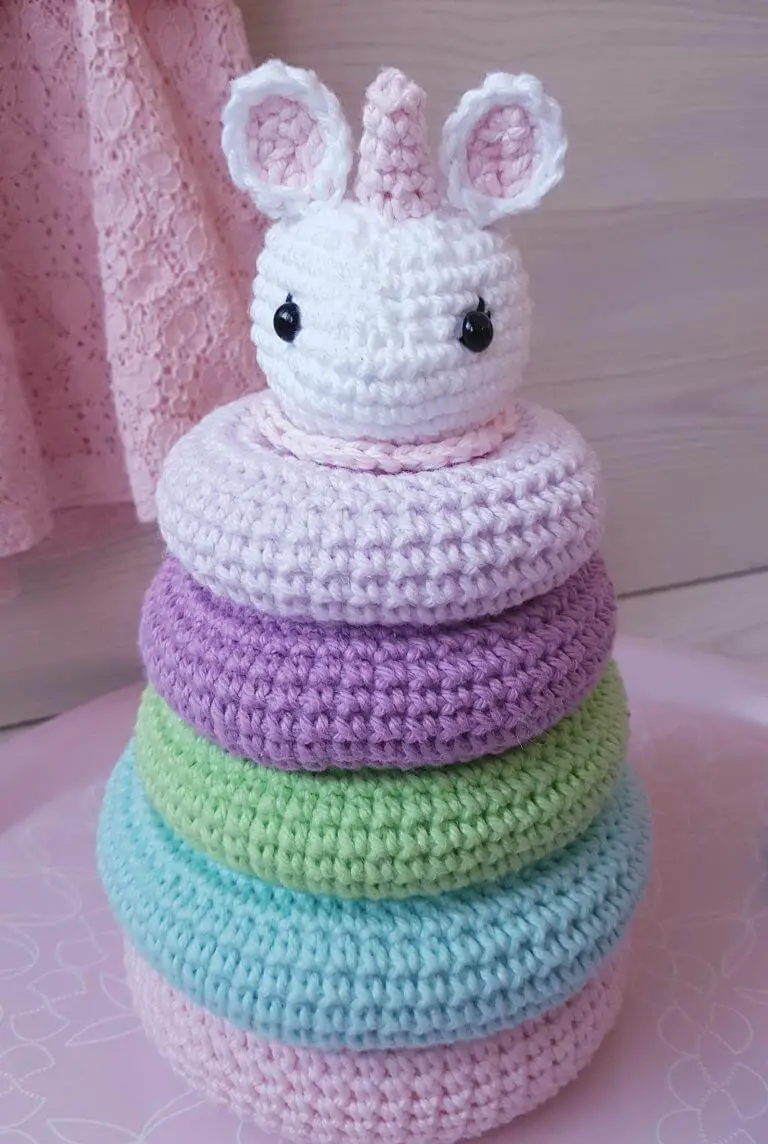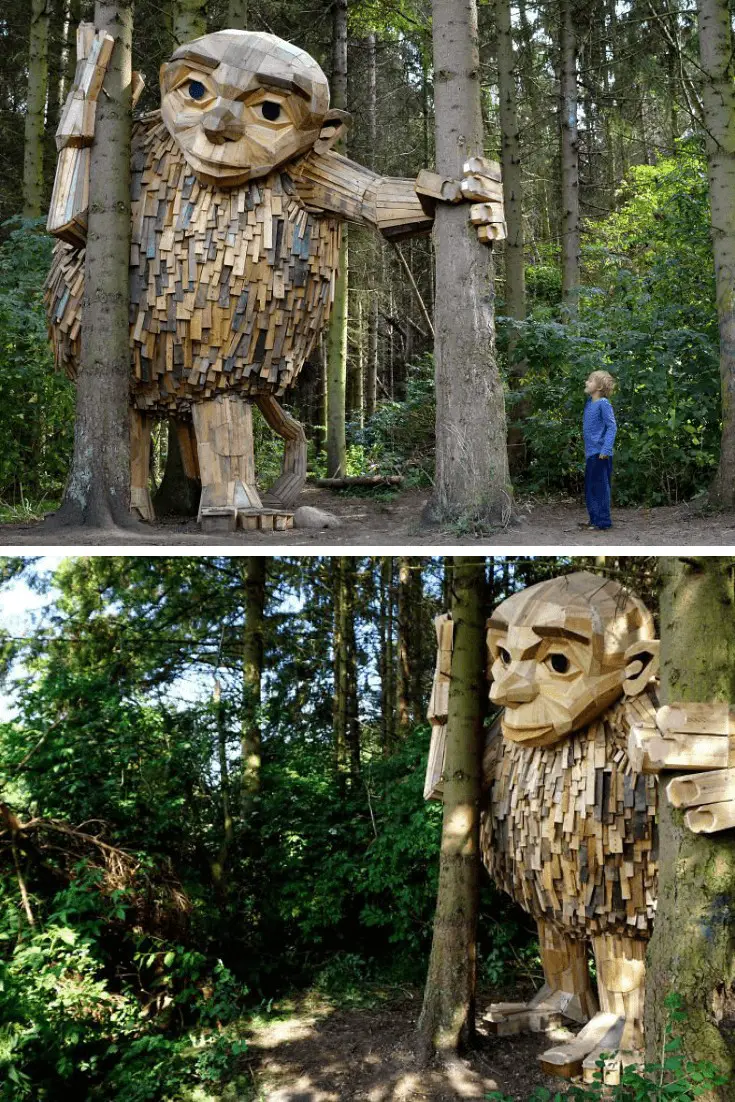12 Alternatives To Landscape Fabric For A More Sustainable Garden
When designing a sustainable garden, the choice of materials plays a significant role. While landscape fabric is a popular option, it’s not the only solution. In fact, there are numerous alternatives that offer similar benefits with a reduced environmental impact. This article will explore five eco-friendly options for your garden, examining their advantages and disadvantages.
Rather than relying on traditional landscape fabrics, gardeners can opt for materials like bark mulch, burlap, cardboard, compost, or ground cover plants. Each of these alternatives has its own unique characteristics, making them suitable for specific situations. For instance, bark mulch provides a natural barrier against weeds while also adding aesthetic value to your garden. Burlap, on the other hand, offers a more rustic look and can help retain moisture in the soil.
Cardboard is an excellent choice for suppressing weeds and regulating soil temperature. Compost adds valuable nutrients to the soil as it breaks down. Ground cover plants, meanwhile, create a dense carpet of foliage that smothers weeds. While these alternatives have their own set of advantages, they also come with some drawbacks. For instance, bark mulch may attract pests or retain too much moisture, while burlap can be prone to decomposition.
Cardboard may not provide adequate weed suppression, and compost requires careful management to avoid over- or under-fertilization. Ultimately, the choice between traditional landscape fabric and these eco-friendly alternatives depends on your specific garden needs and goals. By considering the pros and cons of each option, you can make an informed decision that aligns with your values and promotes a thriving, sustainable garden.
What is Landscape Fabric?
Landscaping professionals and gardening enthusiasts alike rely on landscape fabric, a durable product crafted from non-biodegradable plastics designed for use in various outdoor applications. This versatile material serves as an effective weed barrier, controlling unwanted plant growth while preventing erosion on slopes or embankments where vegetation is scarce.
Additionally, landscape fabrics are often employed beneath mulch to suppress weed intrusion, ensuring a tidy and well-manicured appearance. Notably, the polyethylene-based fabric used in this product boasts an impressive lifespan of up to 100 years when buried in soil, making it a reliable choice for long-term landscaping projects.
Pros of using landscape fabrics
Using landscape fabrics in your garden has its share of advantages and disadvantages. On the positive side, these materials are highly effective at suppressing weed growth, can help stabilize slopes, and have a long lifespan. This means that with minimal effort, you can maintain a neat and tidy garden without worrying about pesky weeds spoiling the look. However, there are several drawbacks to consider.
One major concern is the cost of landscape fabrics, which may be a significant investment for some gardeners. Additionally, these materials do not biodegrade in soil, making them less environmentally friendly than other options. Furthermore, their impermeable nature means that plants’ roots may struggle to receive adequate water and nutrients, potentially requiring more frequent watering.
Lastly, the fabric’s barrier can make it challenging for new plants to establish themselves, as they cannot easily break through the material and grow. As a result, gardening with landscape fabrics requires careful consideration of these trade-offs.
Cons of using landscape fabrics
While landscape fabrics offer several benefits, they also come with some notable drawbacks. One of the main cons is their expense, which can be a significant upfront cost. Furthermore, since they don’t biodegrade, they’ll remain in the soil indefinitely, potentially impeding water and nutrient uptake by plant roots. This can hinder the growth of new plants, making it more challenging to cultivate a diverse ecosystem.
Moreover, landscape fabrics can make weed removal much more difficult, as they won’t yield to manual pulling like traditional mulching methods would allow.
The long-term implications of using non-biodegradable materials like landscape fabric are concerning, as they’ll be around for generations to come. It’s essential to consider the potential consequences when deciding how to manage your garden.
What are Landscape Fabric Alternatives?
While Landscape Fabric is an effective way to prevent weeds from sprouting, there are several organic and inorganic options that can achieve similar results without sacrificing the aesthetic appeal of your garden. Organic Mulches, such as straw or wood chips, can help suppress weed growth by depriving them of light and moisture. Rocks and gravel can also serve as a physical barrier, preventing weeds from taking root.
Additionally, some gardeners have found success in using soil amendments that alter the pH level of the soil, making it less hospitable to certain types of weeds.
Bark mulch
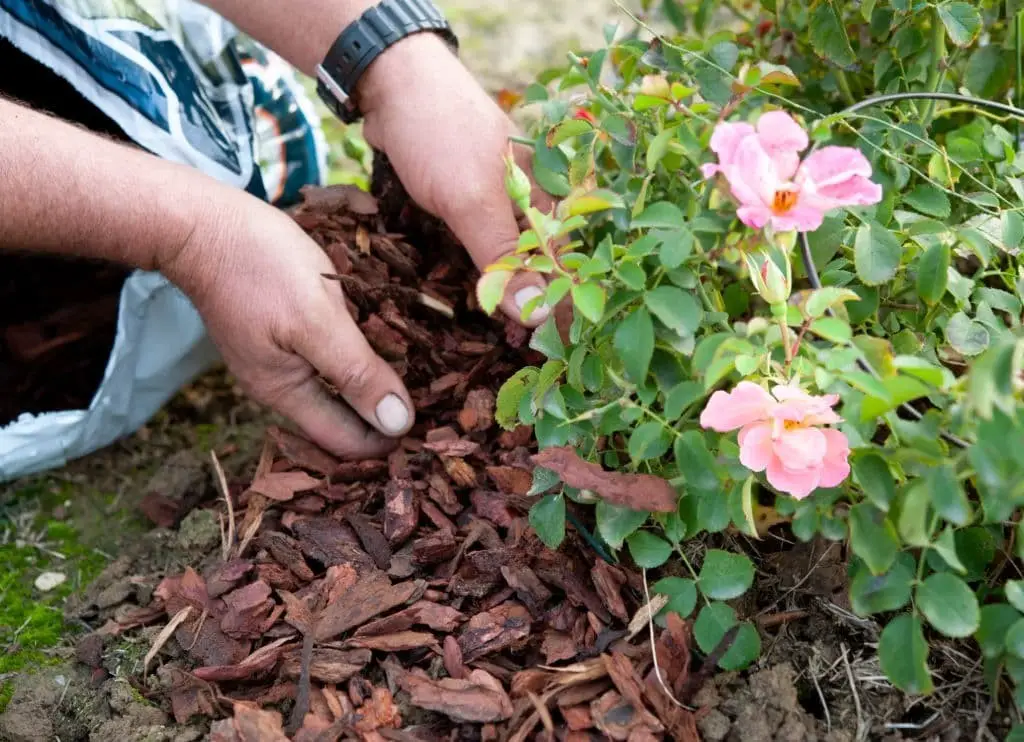
Bark mulch is an eco-friendly alternative to traditional landscape fabrics that effectively prevents weed growth while retaining soil moisture. Its natural composition and decomposition properties make it an attractive option for those looking to reduce their environmental impact. Unlike synthetic options, bark mulch comes from the grinding of logs into small pieces, offering a range of colors including black.
When used as a substitute for landscape fabric, bark mulch demonstrates its unique benefits: retaining moisture in the soil, suppressing weed growth, and eventually improving soil quality through decomposition. However, users should be aware of two key limitations – high cost for larger gardens and potential fire hazard if not properly utilized.
Burlap
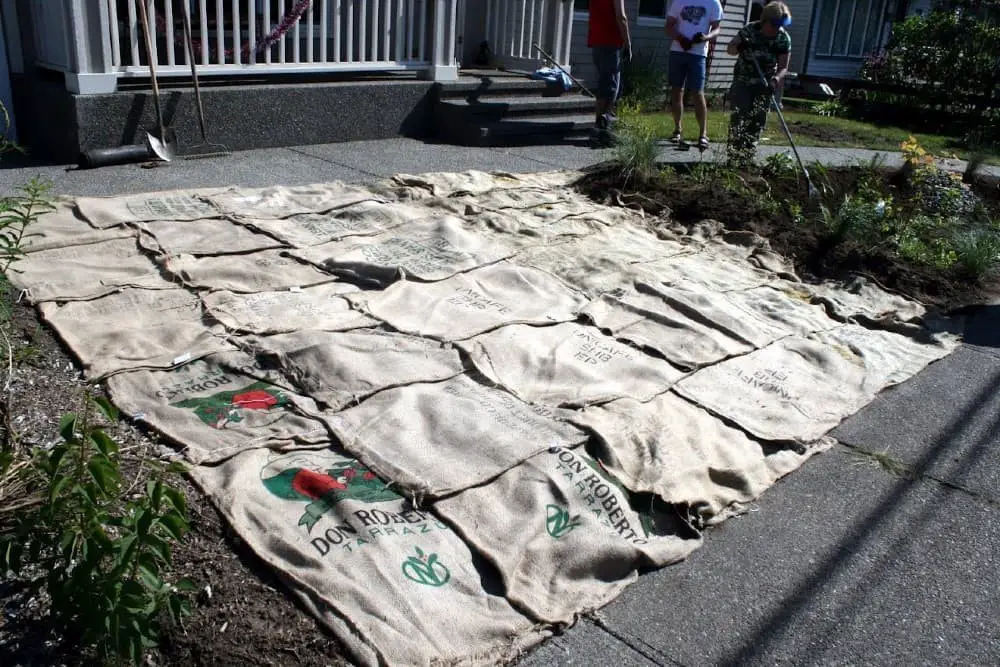
Burlap is a practical and budget-friendly option for landscape fabric, offering a balance of affordability and ease of use. Additionally, it possesses some degree of weed control capabilities, although it may not be as potent as bark mulch. This natural material stands out due to its biodegradable properties and lack of specialized installation requirements.
The advantages of utilizing burlap include:
– Its affordability makes it an accessible choice for many gardeners.
– Burlap is readily available, eliminating the need for extensive searching.
– As a natural material, it can be easily broken down and returned to nature.
– Unlike some alternatives, no specialized tools or equipment are required for installation.
However, there are also some drawbacks to consider:
– Burlap may require more frequent replacement compared to other options.
– Working with the material can be challenging, particularly when dealing with wet soil.
Cardboard
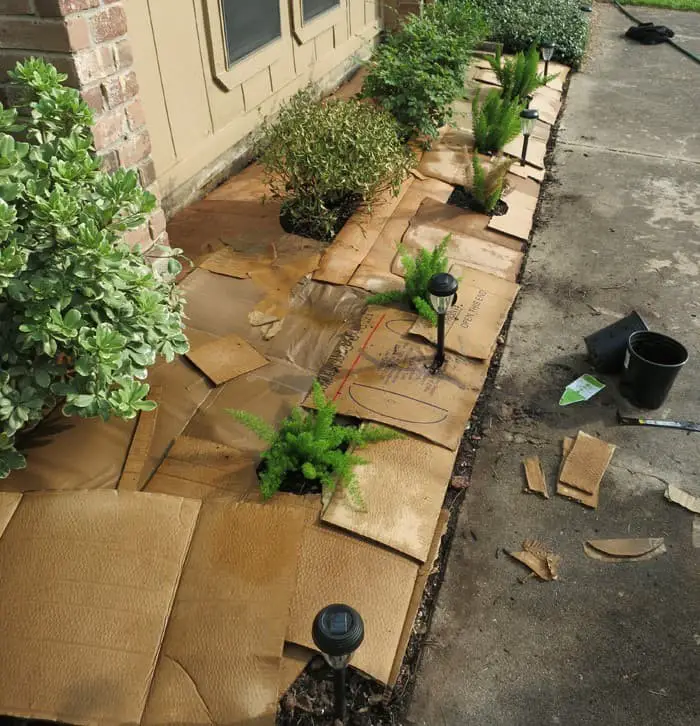
Instead of relying on landscape fabric, consider an eco-friendly alternative like cardboard. This biodegradable material serves as a reliable weed blocker and mulch, while also preventing soil erosion. One effective way to utilize cardboard is by first dampening the area where you’ll be placing it, then laying it atop the soil and covering it with mulch. Be sure to overlap the cardboard pieces to prevent weeds from growing through.
Additionally, you can use cardboard as a mulch by cutting it into smaller sections and surrounding plants. Cardboard offers several advantages, including its affordability and recyclability. However, it does require more frequent replacement compared to other alternatives, and can be challenging to work with in damp soil conditions.
Compost
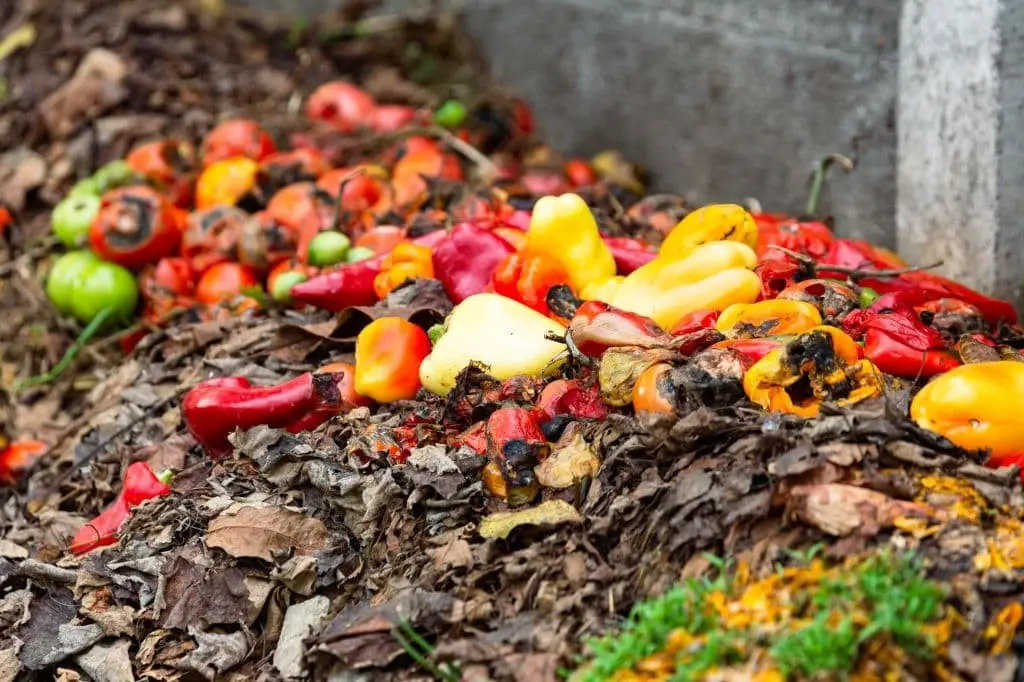
Compost offers a natural alternative to landscape fabric, providing a range of benefits for garden health. Unlike landscape fabrics, which primarily aim to suppress weeds, compost contains microorganisms that not only curb weed growth but also enhance plant well-being by improving soil structure and supplying essential nutrients. The microbial activity in compost also breaks down organic matter, releasing vital compounds into the soil.
In contrast, landscape fabrics hinder drainage, potentially leading to root rot in plants, whereas compost fosters a balanced hydrological cycle, allowing water to penetrate the soil while retaining it effectively. Furthermore, while landscape fabrics require periodic replacement every few years, compost is a dynamic, living material that continuously degrades and replenishes nutrients in the soil.
Finally, unlike the non-renewable materials used in landscape fabric production, such as fossil fuels, compost can be crafted from readily available, organic waste, like food scraps, making it an eco-friendly choice for gardeners.
Ground cover plants
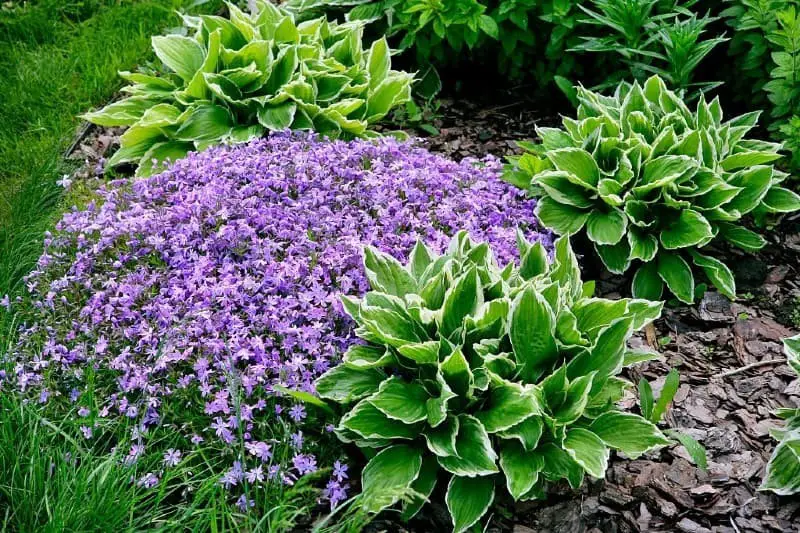
Instead of relying on landscape fabrics to suppress weeds and prevent erosion, consider incorporating ground cover plants into your garden design. These low-growing, spreading plants form a dense layer of vegetation that can outcompete weeds for resources, thereby preventing their growth. Many types of ground cover plants also offer additional benefits, such as erosion control and improved soil health. Some popular options include creeping fig, ivy, Boston fern, lady fern, and vinca vine.
Unlike landscape fabrics, which work by blocking weed seeds from germinating, ground cover plants actively protect plant roots from disease while also keeping the soil cool in summer and warm in winter. They even promote healthy water infiltration by allowing rainwater to penetrate deeper into the soil. In contrast, landscape fabrics can cause root rot and other problems if not replaced regularly.
Moreover, they are made from non-renewable materials like fossil fuels, whereas ground cover plants are a renewable resource that can be cultivated in your own garden. For a more sustainable approach, opt for ground cover plants instead of landscape fabric – they offer the same benefits with a reduced environmental impact.
Herbicides
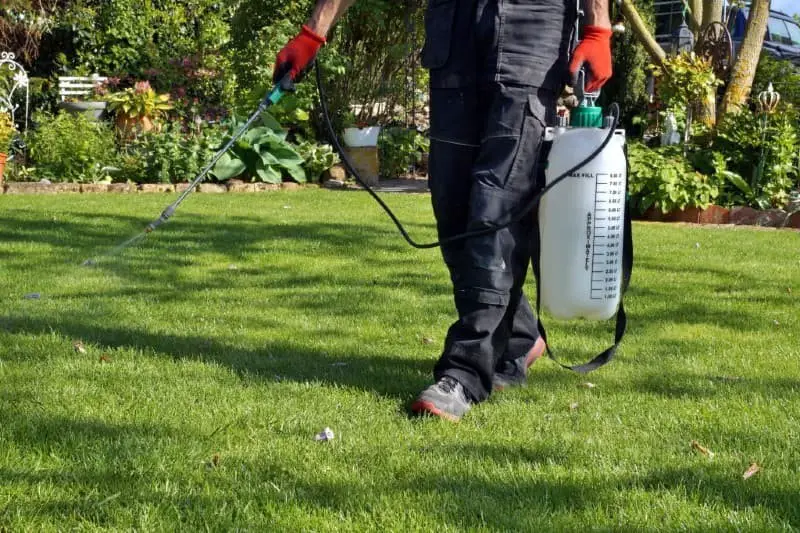
Herbicides offer a convenient and effective alternative to using landscape fabric in your garden. By targeting specific weeds, they eliminate the need for physical removal or constant reapplication. With numerous options available, you can choose an herbicide that suits your needs and preferences. While landscape fabric provides a chemical-free solution, it may not be practical due to cost and availability constraints.
In contrast, herbicides are a scalable solution for larger areas, reducing the time spent on weeding and maintenance. One of the key advantages of herbicides is their ability to target specific plants, leaving desirable vegetation unharmed. This selective approach also ensures that harmful plants like poison ivy are eliminated. Landscape fabrics, on the other hand, can impede drainage and cause root rot in plants, whereas herbicides do not affect soil drainage or plant health.
Furthermore, herbicides offer a flexible solution that can be reapplied as needed, unlike landscape fabric which requires replacement every few years. Additionally, herbicides are made from renewable resources, making them a more sustainable option compared to landscape fabrics, which rely on non-renewable materials like fossil fuels.
Landscaping timbers
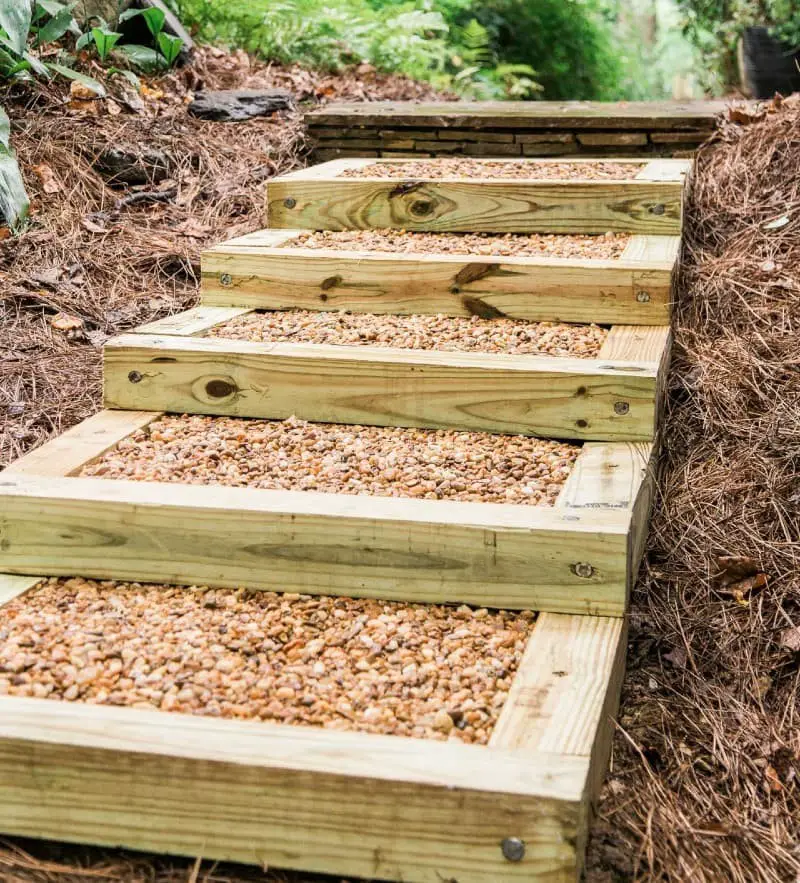
Landscaping timbers offer an eco-friendly alternative to landscape fabric, boasting natural origins such as wood or bamboo and the ability to biodegrade over time without releasing harmful chemicals into the soil. Not only do they contribute to retaining moisture in the soil, a boon for plants with watering needs, but they can also be used to create visually appealing borders and dividers in a garden.
Additionally, landscaping timbers can effectively prevent soil erosion while providing a barrier for plants, unlike landscape fabrics which can hinder drainage and promote root rot. Furthermore, whereas landscape fabrics require replacement every few years, landscaping timbers can endure with proper care for many years.
The environmental benefits are twofold: not only do they eschew the use of non-renewable materials like fossil fuels but also offer the opportunity to be crafted from recycled materials, making them a truly sustainable option.
Newspaper
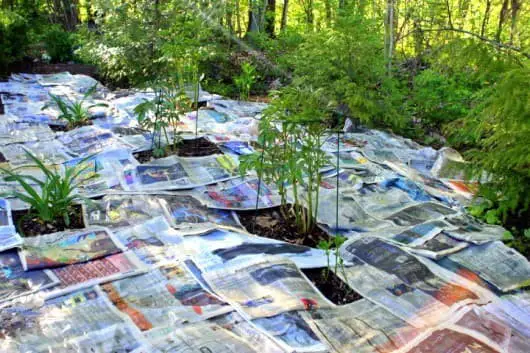
Using newspaper as mulch provides an eco-friendly solution for suppressing weeds and retaining moisture in the soil. As it’s biodegradable, it won’t contribute to landfill waste like landscape fabric does. To apply it, simply cover the desired area with multiple layers, wetting each layer as you go. This natural alternative decomposes within six months, requiring annual replacement.
Unlike landscape fabrics, which limit drainage and can cause root rot, newspaper’s porous texture allows for proper water flow while insulating the soil. Additionally, newspaper is a renewable resource that can be recycled after use, unlike non-renewable materials like fossil fuels used to make landscape fabrics.
Pine Needles
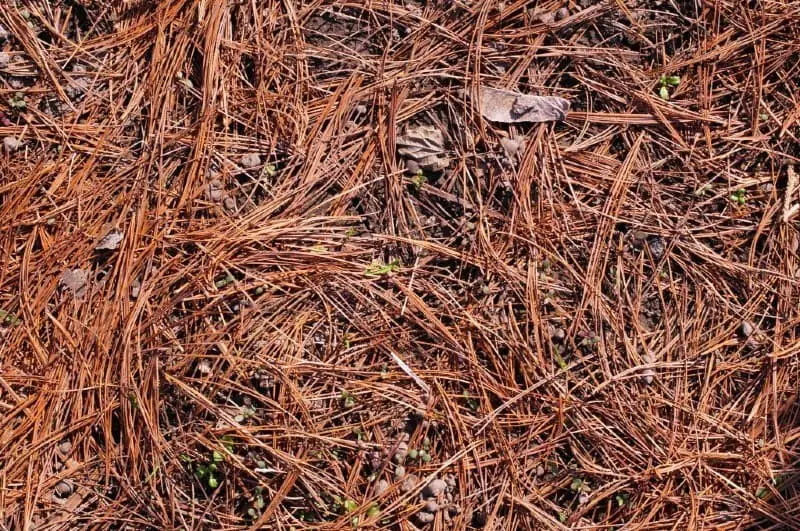
When it comes to suppressing weeds and directing water flow in gardens, many turn to landscape fabric. However, this synthetic material can have negative environmental impacts. A more sustainable option is pine needles. These natural mulch materials can be used in a layer about four inches deep to effectively suppress weeds and retain moisture in the soil. As they decompose, they add valuable organic matter to the soil.
If you want a longer-lasting solution, landscape fabric can be used under the pine needles. But often, it’s not necessary. Pine needles are generally inexpensive and easily accessible from local tree trimming services or DIY enthusiasts who regularly prune their trees. While they do need to be replenished every year or two, this can actually add to the expense of using them as a mulch material.
Landscape fabric, on the other hand, may last longer, but it typically requires a more significant upfront investment. In terms of water retention, pine needles are often superior to landscape fabric. While the fabric allows some moisture through, it’s not nearly as effective at retaining soil moisture as natural soil without a barrier. This can be particularly problematic in areas with high water tables or during periods of heavy rainfall.
Pine needles, by slowing down evaporation, help keep the soil consistently moist. Additionally, they provide a natural weed barrier that makes it easy to remove any weeds that do manage to grow through them. Landscape fabric, on the other hand, can actually encourage weed growth by blocking sunlight and creating an ideal environment for their development. If you’re looking for an environmentally friendly alternative to landscape fabric, pine needles are definitely worth considering.
They suppress weeds, retain moisture, and improve soil quality as they decompose. For those seeking a more sustainable option to plastic in their garden, pine needles are a great choice.
Plastic sheets
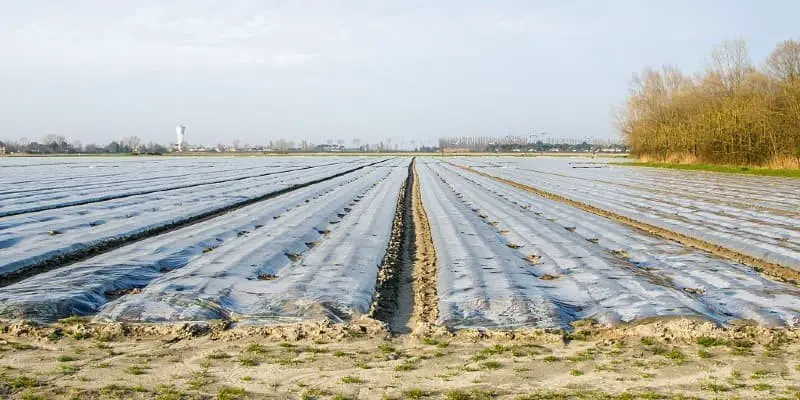
When considering alternative options to landscape fabrics, plastic sheets are definitely worth exploring. Unlike traditional landscape fabrics, which solely prevent weed seeds from germinating, plastic sheets offer additional benefits. They provide a more comprehensive solution by blocking weeds while also allowing for proper soil drainage and plant health. This is in contrast to landscape fabrics, which can impede drainage and potentially cause root rot.
Another advantage of plastic sheets is their durability – they can last for many years before breaking down and becoming compost, unlike landscape fabrics that require replacement every few years. Furthermore, plastic sheets are made from a renewable resource that can be recycled after use, making them a more sustainable option compared to non-renewable materials used in the production of traditional landscape fabrics.
Shredded leaves

When it comes to controlling weeds in my garden, I’ve found that using shredded leaves is an effective and eco-friendly approach. To do this, I simply mow the lawn on a dry day and spread the clippings over areas where weeds are present. This method not only saves me money by reusing yard waste, but it also promotes sustainability by recycling organic matter back into the garden.
While working with shredded leaves can be a bit messy and requires some patience as they break down, I believe their long-lasting benefits make them a great alternative to landscape fabrics. In contrast, these synthetic products need to be replaced every few years, generating waste and contributing to environmental concerns.
Moreover, whereas landscape fabrics are derived from non-renewable resources like fossil fuels, shredded leaves are a renewable resource readily available in many backyards.
Wood chips
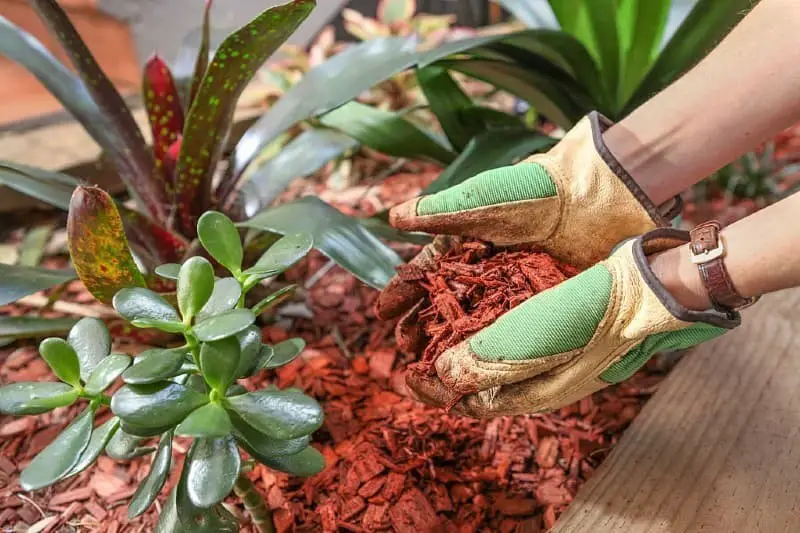
While many gardening professionals swear by wood chips as the ultimate material for supporting plant growth, there’s a crucial distinction to be made between their benefits and limitations. Landscape fabric, for instance, can suffocate roots by blocking air, water, and nutrients – a recipe for root rot. In contrast, wood chips break down over time, releasing vital nutrients back into the soil.
Moreover, they’re an effective solution for controlling erosion on sloping surfaces like hillsides and banks. However, it’s essential to exercise caution when selecting wood chips: fresh ones can form a dense mat that stifles growth. Instead, opt for aged wood chips that have undergone sufficient decomposition – ideally after at least six months of weathering.
FAQs about Landscape fabric alternatives
Can I use plastic instead of landscape fabric?
While plastic may seem like an unconventional choice compared to landscape fabric, there are valid reasons why you might prefer it. For instance, you might not have access to wood chips or prefer to avoid using organic materials that will eventually break down and enrich the soil. Moreover, plastic is particularly effective in preventing erosion on slopes and banks. However, securing the plastic in place can be a challenge, requiring careful consideration to prevent rips and tears.
It’s also important to note that plastic alternatives like landscape fabric are not suitable for use under plants, trees, or shrubbery, as they do not degrade over time. This is an important consideration when selecting a material for your landscaping project.
Can I use gravel instead of landscape fabric?
When it comes to landscaping, gravel is an excellent alternative to traditional landscape fabric. Not only does it offer a more visually appealing solution, but it can also be used creatively in other areas of your garden, such as pathways or patios. One important consideration when using gravel is the need for a weed control cloth underneath to prevent unwanted weeds from sprouting up and ruining the aesthetic.
By choosing gravel as an alternative to landscape fabric, you’ll be able to maintain a neat and tidy appearance in your garden with minimal effort.
Can worms get through landscape fabric?
When it comes to keeping weeds at bay, landscape fabric is a reliable option. However, it can pose a barrier for worms trying to aerate the soil and recycle nutrients. If you’re looking for an alternative that still allows for healthy soil cycling, consider switching to organic mulch. Fresh leaf or grass clippings make excellent choices, providing not only weed suppression but also a natural boost of nitrogen as they break down.
This dual benefit can enhance the overall health and fertility of your soil.
Is landscape fabric necessary under rock?
Landscape fabric may not be a necessity when working with rock gardens, but it can prove beneficial in specific situations. By installing landscape fabric beneath your rocky terrain, you’ll enjoy several advantages. For one, it prevents weeds from taking root and sprouting, which reduces the frequency of weeding and eliminates the need to manually pull up errant growth that may push through your mulch.
Additionally, landscape fabric excels at retaining moisture better than exposed soil, ensuring plants situated beneath the rocks remain well-hydrated and less susceptible to drying out. This added layer can prove particularly valuable in regions with low rainfall or during periods of drought.
Do you put soil on top of landscape fabric?
While some gardeners may opt to conceal landscape fabric with a thin layer of soil, it’s entirely unnecessary. This porous material is designed to withstand the test of time and can thrive under a variety of conditions, including direct exposure. In fact, its durability allows it to function effectively for years without requiring additional covering or maintenance, making it an attractive solution for many gardeners seeking low-maintenance options.
Can you plant through landscape fabric?
While planting through landscape fabric may require a bit more effort, it’s still a viable option for introducing new life into your garden. Unlike bare soil, landscape fabric won’t impede seed germination or stifle the growth of young shoots. In fact, it can be beneficial to create small holes in the fabric where you want to establish shrubs or flowers, allowing their roots to easily penetrate the soil and access essential drainage and aeration.
For added security, landscapers often employ landscape staples to keep the fabric in place around newly planted specimens.
Can you put mulch over landscape fabric?
With confidence, you can layer mulch or other organic materials atop landscape fabric without worrying about any adverse effects. This is because landscape fabric is specifically engineered for this very purpose, and its composition won’t degrade when covered with a thick layer of mulch. In fact, landscape fabric serves as a reliable barrier against weeds that might attempt to sprout through your mulched topsoil, thereby preventing the growth of unwanted vegetation.
Additionally, it provides a sturdy separation between the soil beneath and any organic materials or landscaping rocks that may be piled on top, ultimately helping to mitigate erosion concerns in areas susceptible to heavy rainfall.
What is black landscape fabric made of?
Black landscape fabric, crafted from polypropylene, offers a versatile solution for gardeners. Its weight can be tailored to suit specific needs, ranging from thin and lightweight to thick and robust. This innovative material plays a crucial role in weed suppression by physically separating weeds from direct contact with the soil. As a result, any sprouted seeds will develop a limited root system, minimizing competition with other plants for essential nutrients.
Furthermore, landscape fabric helps to retain moisture in the soil by blocking sunlight, which would otherwise hasten evaporation and hinder water absorption.
Conclusion
When considering landscape fabric as a means to suppress weed growth, it’s essential to explore alternative approaches that can deliver comparable outcomes without compromising environmental or human well-being. Instead of relying solely on this popular method, you may find that one of these alternatives better suits your gardening needs.
Related Posts
When it comes to your farm business, choosing the right equipment is crucial for its success. However, with so many options available in the market, selecting the suitable one can be overwhelming. Similarly, as you plan to install a fence around your home, understanding the importance of doing so will ensure the security and value of your property are well-protected. Moreover, with the increasing focus on water conservation, implementing effective irrigation systems for your garden is vital.
Furthermore, when availing home services such as driveway sealing, it’s essential to understand gratuity etiquette to show appreciation for a job well done. On the other hand, pursuing careers in landscape architecture or design requires dedication and passion. For instance, understanding how to become a landscape architect can lead to a fulfilling career path.

